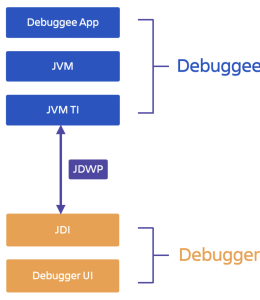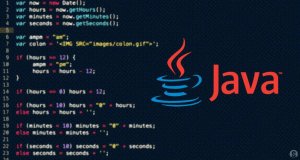Debugging Java applications | Java is a popular programming language used to create a wide range of applications, from mobile apps to web-based systems. As with any programming language, it is not uncommon to encounter bugs in Java applications. Debugging is the process of finding and fixing these bugs. In this article, we will discuss some tips and tricks for debugging Java applications.

Tips and tricks for debugging Java applications.
- Use a Debugger A debugger is a tool that allows you to step through your code line by line, inspect variables and data structures, and track down the source of a bug. Java provides a built-in debugger that can be used from within popular Integrated Development Environments (IDEs) such as Eclipse and IntelliJ IDEA.
- Use Logging Logging is another tool that can help you debug your Java applications. By inserting log statements into your code, you can track the flow of your application, identify potential problem areas, and gain insight into the behavior of your code.
- Divide and Conquer If you have a large and complex application, it can be helpful to break it down into smaller components and test them individually. This can make it easier to isolate the source of a bug.
- Check Your Assumptions One common mistake that programmers make when debugging is assuming that their code is behaving as expected. Make sure to test all of your assumptions and verify that your code is doing what you think it is doing.
- Take a Break Debugging can be a frustrating and time-consuming process. If you are struggling to find a bug, it can be helpful to take a break and come back to it with fresh eyes.
- Get Help Debugging can be a collaborative process. If you are stuck, consider reaching out to a colleague or posting on a programming forum for help.
- Reproduce the Bug In order to fix a bug, you first need to be able to reproduce it. Make sure you have a clear understanding of the steps required to trigger the bug.
- Use Test Cases Test cases are a powerful tool for debugging. By creating a set of test cases that cover different scenarios, you can test your code in a systematic way and identify potential problem areas.
- Read the Documentation Java provides a wealth of documentation that can be helpful when debugging. Make sure to consult the official documentation for the classes and methods you are using.
- Keep Learning Debugging is a skill that takes time to develop. Make sure to continue learning and experimenting with new techniques and tools to improve your debugging skills.
Mastering Exception Handling in Java
https://studywholenight.com/mastering-exception-handling-in-java/
- Use Breakpoints Breakpoints are a useful feature of debugging tools that allow you to pause the execution of your code at a specific point. This can help you inspect the state of your application and identify the source of a bug.
- Debugging Multithreaded Applications Debugging multithreaded applications can be particularly challenging. Make sure to use synchronization and locking mechanisms to ensure that your code is thread-safe. Additionally, make sure to test your code under different scenarios to identify any race conditions or deadlocks.
- Debugging Networked Applications If you are debugging a networked application, make sure to use tools such as Wireshark or tcpdump to inspect the network traffic. This can help you identify issues such as dropped packets, malformed packets, or incorrect packet sequencing.
- Use Exception Handling Exception handling is a powerful tool for debugging your Java applications. By catching exceptions and logging them, you can gain insight into the behavior of your code and identify potential problem areas.
- Use Code Reviews Code reviews are a valuable tool for identifying bugs and improving the quality of your code. By having other programmers review your code, you can gain fresh perspectives and identify potential issues that you may have missed.
- Test Your Code on Different Platforms Make sure to test your code on different platforms and environments to ensure that it works correctly under different scenarios. This can help you identify issues such as platform-specific bugs or compatibility issues.
- Use Automated Testing Automated testing is an essential tool for debugging your Java applications. By creating automated test cases that cover different scenarios, you can identify potential bugs before they make it into production.
- Refactor Your Code If you are struggling to identify the source of a bug, consider refactoring your code. By breaking down your code into smaller components and using better naming conventions, you can make it easier to understand and debug.
Conclusion
Debugging is an essential part of the software development process. By using the tips and tricks discussed in this article, you can improve your debugging skills and write more reliable and efficient Java applications. Remember to stay patient, persevere through the process, and never stop learning!
In conclusion, debugging is an essential skill for any Java programmer. By using tools such as debuggers and logging, breaking down your code into smaller components, and testing your assumptions, you can identify and fix bugs in your Java applications. With practice and perseverance, you can become a master of debugging and write more reliable and efficient code.
- Creating Allure Report With Cucumber – Easy Steps
- How do I make an HTTP request in JavaScript – Best Approach?
- Java Objects: A Comprehensive Guide from Basics to Intermediate Concepts
- Exploring Method Overloading in Java: Powerful Programming Technique
- Mastering Java Enum: A Comprehensive Guide for Developers




